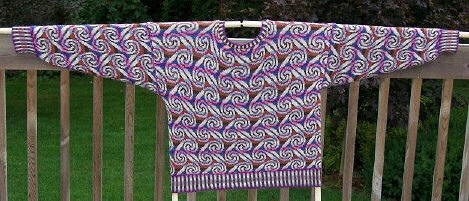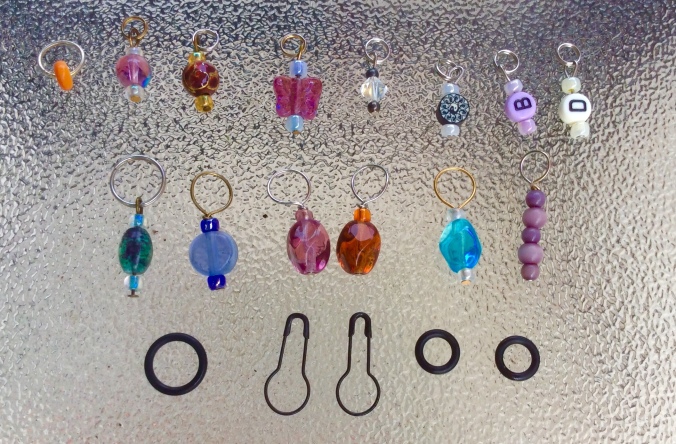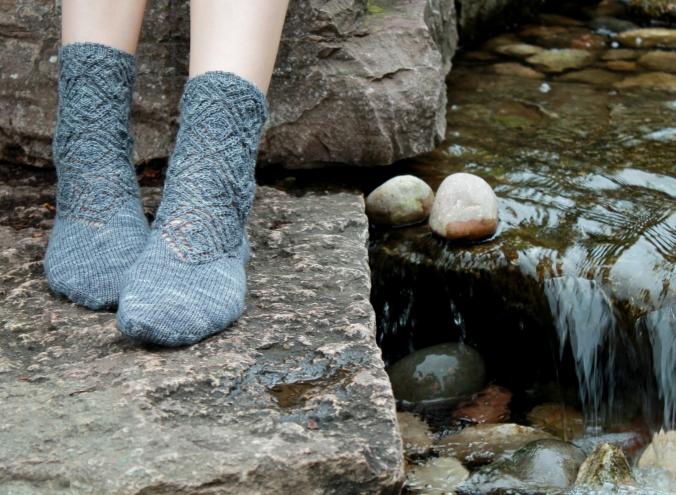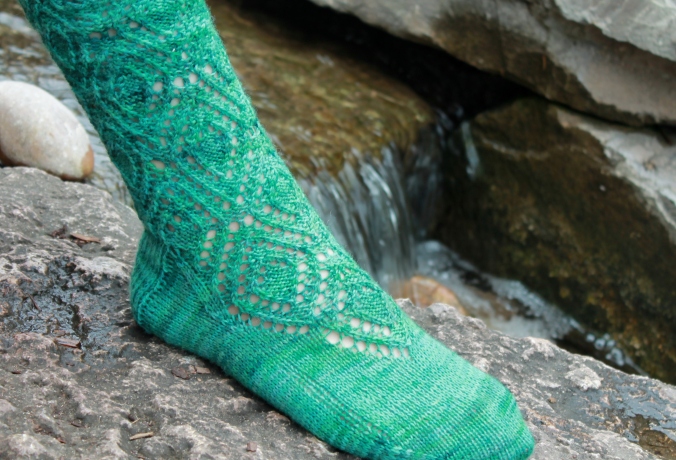After working frantically on my silk-merino roving, I finally completed spinning it. I ended up with 560 yards and 6.7 ounces of 2-ply fingering weight yarn.

I purchased the roving from Nezinscot Farm Yarns & Wool in Turner, Maine. The ownders of this farm taught me to spin before I even purchased my spinning wheel. The farm had a day where you could show up and learn any skill. At that time, I told them I wanted to try spinning. They brought a wheel onto their large front porch and set about teaching me to spin. I was interested in spinning yarn but every class required that you already own a wheel to sign up. A $500 investment to see if I liked spinning seemed to be a bit of a risk. Luckily I picked up spinning fairly quickly and bought a wheel soon after.
After I finished plying the merino-silk yarn, I let it sit on the bobbin for awhile to allow it to rest. Then I wound my yarn into two skeins with my DIY niddy noddy.
I think us yarn people generally like making things ourselves. Since it seemed easy enough I made my own niddy noddy a few yearns back. Essentially it is 3 lengths of dowel with 2 lengths screwed to the ends of the other. Certainly not as beautiful as some niddy noddies I have seen but functional
Finally I washed and whacked my yarn to set the twist. Any day you can beat something for a legitimate purpose is a good day. I am sure my neighbors wondered why I was hitting my deck rails with yarn.
I am pleased with the finished yarn. I like the way the colors meld together in the yarn. The finished yarn feels rather stiff, somewhat like linen. I am assuming it is the silk. The twist is somewhat tight, however.

Since I have not had much formal instruction in spinning, I had asked a more experienced friend to take a look at a skein of yarn I had spun. She noticed that it was a bit undertwisted. True to form, I overspun this yarn in places. There are some spots where the yarn twists around itself and does not lie flat. I think that I will wind it into a ball and see if that straightens it out the rest of the way.
Now that I have this project off the wheel, I need to decide whether to start on my newly acquired Shetland fleece, alpaca, or angora. Choices, choices.


 picked up from written patterns and magazines. When I saw this book I was absolutely stunned by the beauty of the sweaters in its pages. Never mind that the book was out of my budget and that I had no clue how to buy the yarn to knit any of these sweaters. Of course, I bought the book.
picked up from written patterns and magazines. When I saw this book I was absolutely stunned by the beauty of the sweaters in its pages. Never mind that the book was out of my budget and that I had no clue how to buy the yarn to knit any of these sweaters. Of course, I bought the book.
 it was a bit overwhelming for a garment. So what did I learn?
it was a bit overwhelming for a garment. So what did I learn? My favorite part of my notions is my notions bag. I bought it at a garage sale years ago. I believe it was intended for toiletries but I repurposed it for knitting notions. As a matter of full disclosure, I did not reorganize my bag before taking these pictures. After photographing the bag, I realize that I have no idea what the purpose of this bag is supposed to be.
My favorite part of my notions is my notions bag. I bought it at a garage sale years ago. I believe it was intended for toiletries but I repurposed it for knitting notions. As a matter of full disclosure, I did not reorganize my bag before taking these pictures. After photographing the bag, I realize that I have no idea what the purpose of this bag is supposed to be. I used to sell stitch markers on eBay back in the early 2000’s. They are a lot of fun to make and it is so luxurious to be able to have beautiful knitting notions. Now the market is flooded with stitch markers and the price is too low to bother selling them. I still like to make them for myself or as gifts for my knitting friends though.
I used to sell stitch markers on eBay back in the early 2000’s. They are a lot of fun to make and it is so luxurious to be able to have beautiful knitting notions. Now the market is flooded with stitch markers and the price is too low to bother selling them. I still like to make them for myself or as gifts for my knitting friends though.




 .
. I sorted my sock stash out to see what was what. The hanks will probably be used first. It seems I only have three of them left because they get used up fairly quickly. I find that I can generally do more with the semi-solid colors.
I sorted my sock stash out to see what was what. The hanks will probably be used first. It seems I only have three of them left because they get used up fairly quickly. I find that I can generally do more with the semi-solid colors. I was surprised to notice that I had quite a few skeins of solid commercially made yarn. I am guessing this is because I don’t really use it very much so it has been hanging out in my stash for years. I can not remember why I bought the Pace yarn but it seems very thin to use for socks.
I was surprised to notice that I had quite a few skeins of solid commercially made yarn. I am guessing this is because I don’t really use it very much so it has been hanging out in my stash for years. I can not remember why I bought the Pace yarn but it seems very thin to use for socks.
 As many of us have, I also went through a period of dying my own yarn. I mostly used Wilton food coloring, kool-aid, or easter egg dyes. Dying yarn is fun but since I do not want to use more toxic coloring, buy seperate pots, or set up a cooking area outside of my house, I never tried to dye some of the most beautiful colors. These balls of yarn are a few results of my dying experiments. Hopefully some day I will be inspired to use them.
As many of us have, I also went through a period of dying my own yarn. I mostly used Wilton food coloring, kool-aid, or easter egg dyes. Dying yarn is fun but since I do not want to use more toxic coloring, buy seperate pots, or set up a cooking area outside of my house, I never tried to dye some of the most beautiful colors. These balls of yarn are a few results of my dying experiments. Hopefully some day I will be inspired to use them. Finally I have a few skeins of commercial yarn sitting around. I particularly like the skeins with the fall colors. I have tried a few different ideas with them but nothing has seemed quite right yet.
Finally I have a few skeins of commercial yarn sitting around. I particularly like the skeins with the fall colors. I have tried a few different ideas with them but nothing has seemed quite right yet.


 interchangeably. Just don’t do it.
interchangeably. Just don’t do it.



